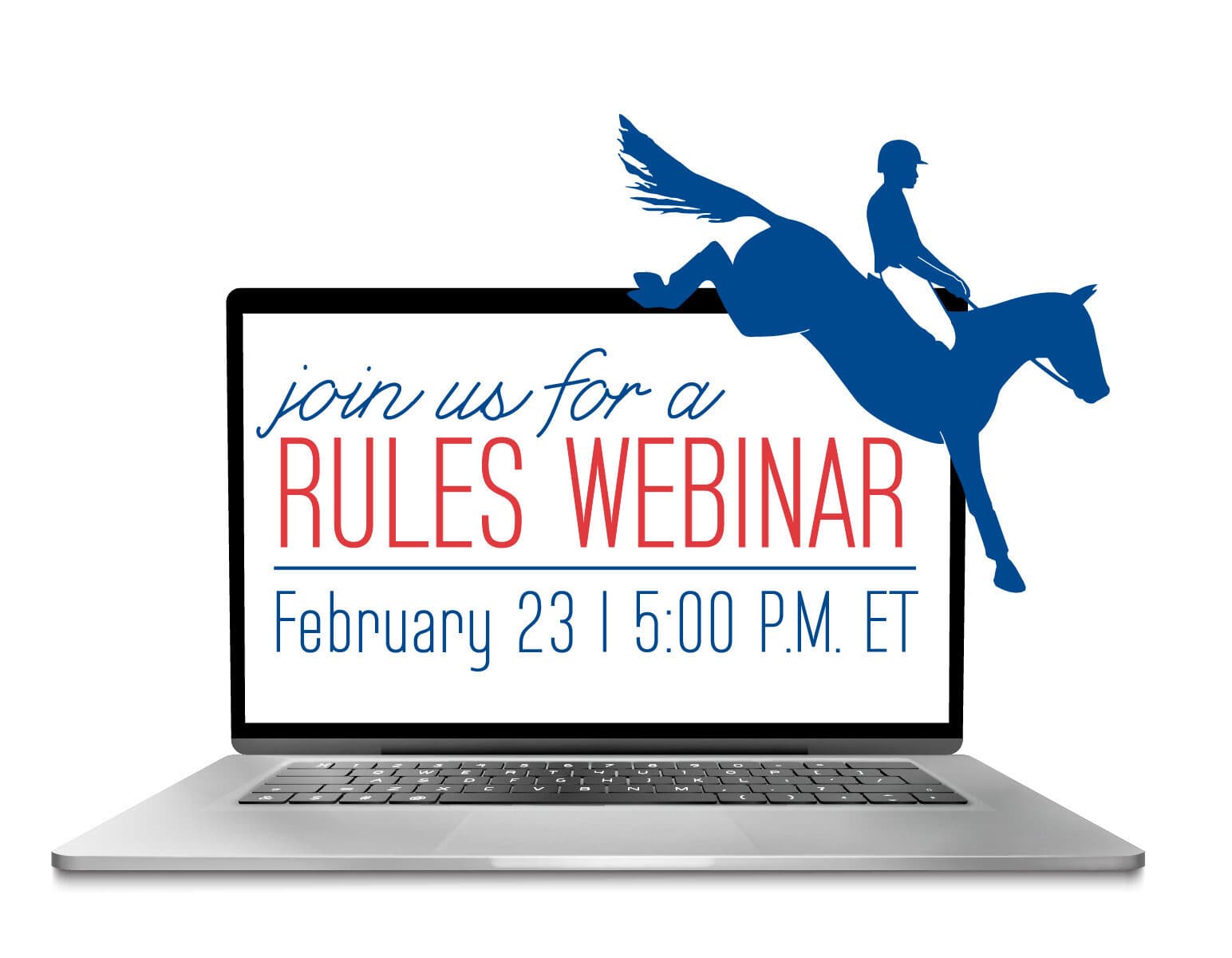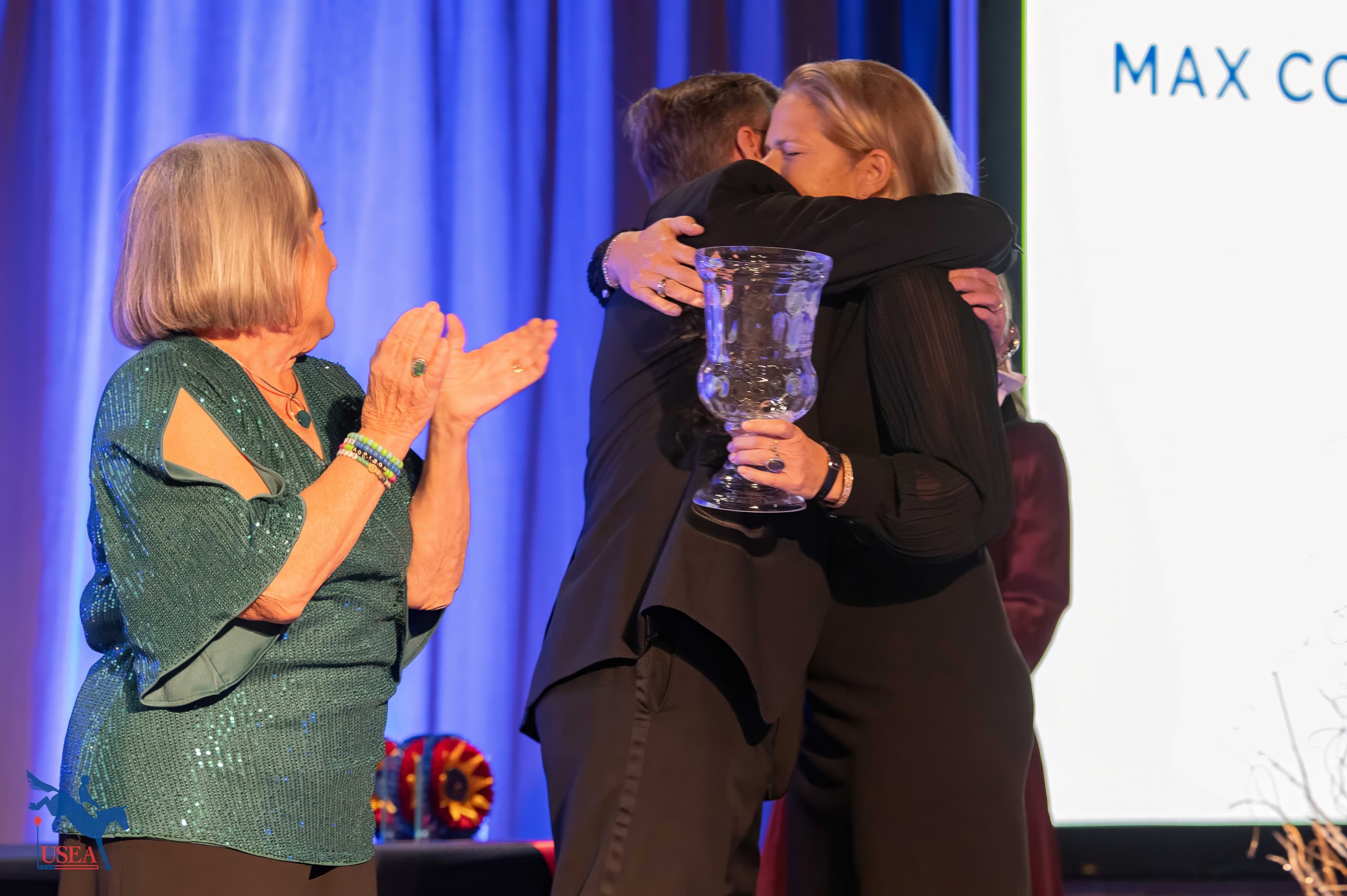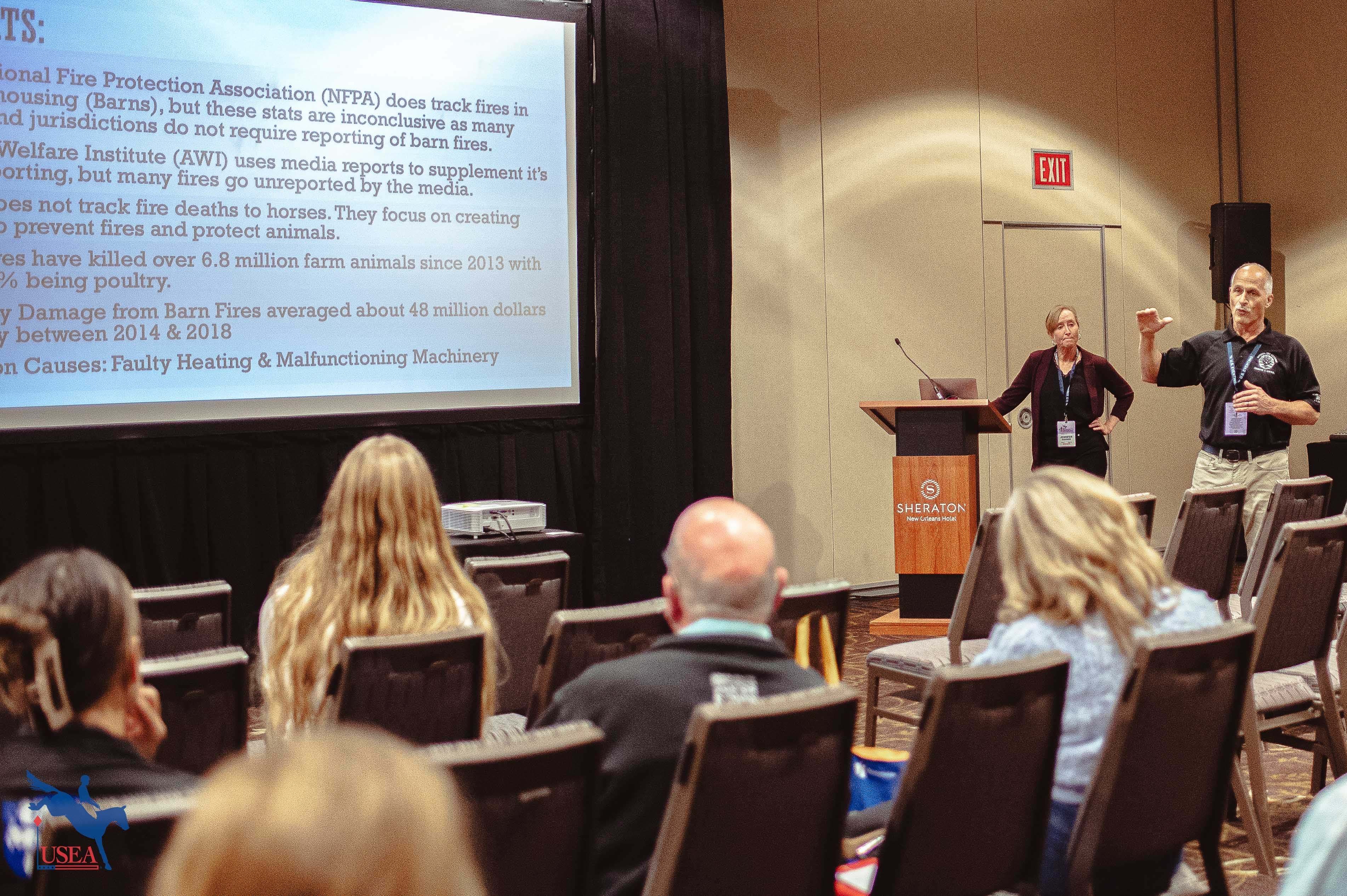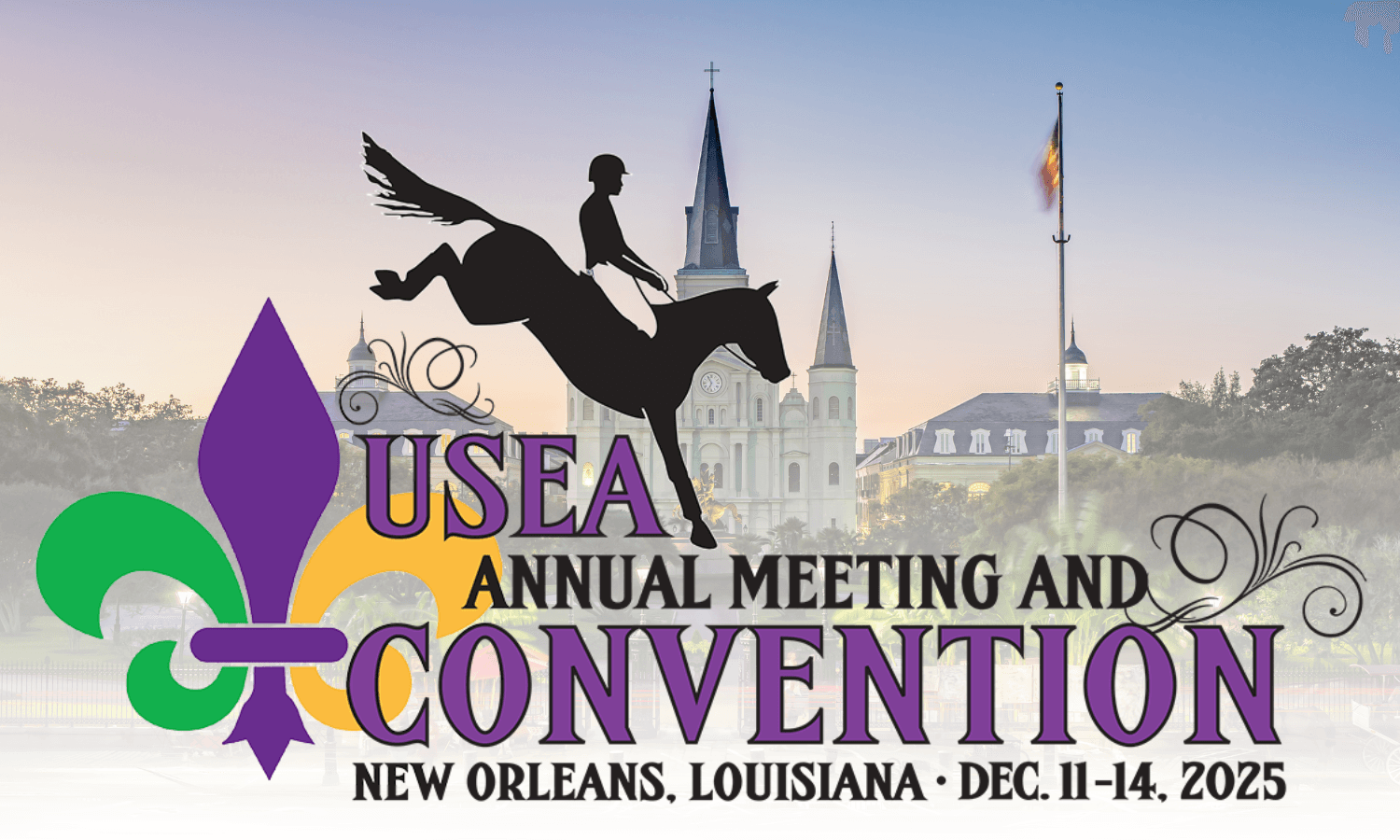Virtual Rules Webinar to Take Place on Tuesday, February 23

UPDATE: The Rules Webinar has been rescheduled for next Tuesday, February 23 at 5:00 p.m. Eastern time due to loss of power and internet in the Pacific Northwest.
After the popularity of Rules Open Forum held virtually during the 2020 USEA Annual Meeting & Convention in December, the USEA Competitions, Calendar, and Rules Committee decided to host another Rules Webinar to share information about the extraordinary rule changes going into effect on April 1, 2021 and the rule change proposals being put forward to the USEF by March 1, 2021 for approval for the 2022 competition season.
Malcolm Hook, Chair of the USEF Eventing Rules Working Group and a member of the USEA Competitions, Calendar, and Rules Committee, will lead a discussion of the extraordinary rule changes set to go into effect on April 1 and the rule change proposals being put forward to the USEF by March 1 to go into effect on December 1, 2021.
The Rules Webinar will be held on Tuesday, February 23 at 5:00 p.m. Eastern time via Zoom and is open for all to attend. Please click here to access the Rules Webinar via Zoom on Tuesday, February 23 at 5:00 p.m. ET.
You will need to have the Zoom app installed on your computer in order to participate in the Rules Webinar. The app will begin downloading automatically when you click to join the Zoom Webinar, or you can click here to download the app in advance. Click here to learn more about joining and participating in a Zoom Webinar.
The extraordinary rule changes that will be covered in the Rules Webinar are as follows. Changes are denoted in bold italics.
EV112 Dangerous Riding
4. The Ground Jury, and the Technical Delegate, and the Course Designer have the authority to stop a rider on the cross-country course for dangerous riding, riding an exhausted horse, excessive pressing of a tired horse, riding an obviously lame horse, excessive use of the whip and/or spurs or riding in an unsafe way.
Rule Change Intent: This rule change recognizes that licensed cross-country course designers by the nature of their training and licensing are qualified to identify dangerous riding. This will enable those designers to have the authority to stop a rider on course for dangerous riding.
EV113 Medical Requirements
1. ACCIDENTS INVOLVING COMPETITORS
a. In the event of an accident in which a competitor is apparently injured or concussed, they must be examined by designated medical personnel to determine if they may take part in another test, ride another horse or if they are capable of leaving the grounds. Refusal to be examined shall be penalized by a fine of $100 (Payable to the Organizing Committee) at the discretion of the Ground Jury and a mandatory Yellow Warning Card being issued.
Rule Change Intent: After the review by the USEA Cross-Country Safety Subcommittee, Active Athletes, and a Task Force focused on Concussions, it was determined that there needs to be more enforcement of mandatory inspection, and a validation of the importance of health before return to play of competitors following apparent injury or concussion.
EV140 Cross-Country Obstacles
9. FRANGIBLE FENCES
b. At National Competitions above the Training Level, all rail fences for which frangible technology can be employed must use that technology (e.g. Frangible Pins, MIM Clips or any other load-relieving device). These fences include, but are not limited to: verticals, gates, open corners, and open oxers. At a minimum, these devices must meet the requirements of the FEI frangible fence standard of 2020. All fences constructed after April 1, 2021 must meet this rule. Obstacles constructed prior to April 1, 2021 may remain as such through December 31, 2021 but must be upgraded or retrofitted to meet this rule as of January 1, 2022.
EV150 Penalties
1. During a round, penalties are incurred for:
g. 20 show jump penalties - Compulsory Retirement
10. COMPULSORY RETIREMENT
A competitor incurs 20 or more jump penalties in show jumping at the Training level or higher. Enforced at the end of the round unless the competitor retires or is eliminated.
Rule Change Intent: This rule is being presented to reduce risk in the sport of eventing. The reasoning has been that in reviewing the incidence of poor riding at competitions, the performance records of those riders that have died in schooling situations, data from EquiRatings, and other indicators, the USEA Cross-Country Safety Subcommittee views it as important to highlight that poor show jumping performance should result in retirement. They believe this should be equally applied regardless of whether show jumping or cross-country occur first in the schedule of the competition. British Eventing instituted this rule for similar reasons and it would be an additional measure to lessen risk in the sport. Compulsory Retirement (CR) designation was chosen to distinguish the penalty from fall of horse (Mandatory Retirement, MR) for tracking purposes.
EV153 Faults
4. Faults are penalized in penalty points or by elimination as set out in this section (EV153).
20 or more (show jump) penalties at Training, Modified, Preliminary, Intermediate, or Advanced: Compulsory Retirement enforced at end of round, unless competitor retires or is eliminated.
Rule Change Intent: This rule is being presented to reduce risk in the sport of eventing. The reasoning has been that in reviewing the incidence of poor riding at competitions, the performance records of those riders that have died in schooling situations, data from EquiRatings, and other indicators, the USEA Cross-Country Safety Subcommittee views it as important to highlight that poor show jumping performance should result in retirement. They believe this should be equally applied regardless of whether show jumping or cross-country occur first in the schedule of the competition. British Eventing instituted this rule for similar reasons and it would be an additional measure to lessen risk in the sport. Compulsory Retirement (CR) designation was chosen to distinguish the penalty from fall of horse (Mandatory Retirement, MR) for tracking purposes.
The Rules Webinar will also review the following rule change proposal that, if approved, would go into effect on December 1, 2021 for the 2022 competition season.
Appendix 3 – Participation In Horse Trials
A competitor and/or a horse may be entered in a Horse Trial without having fulfilled the qualifications noted below, provided the qualifications have been fulfilled at least 10 days before the Cross-Country Test of the competition for which it is needed if the MER has been achieved at a Horse Trial or CCI-S or at least 24 days if the MER has been achieved at a CCI-L. For Preliminary, Modified, and Training Classic Three-Day Events, qualifying competitions must be completed within a 24-month period of the start of the competition. National levels at Preliminary and above, at least one of the required results must have been obtained within six weeks prior to the competition.
3. LEVELS OF HORSE TRIALS AND EVENTS
3.1 BEGINNER NOVICE (B) – Open to competitors of any age, on horses four years of age and older.
3.2 NOVICE (N) – Open to competitors of any age, on horses four years of age and older.
3.3 TRAINING (T) – Open to competitors of any age, on horse four years of age and older.
3.4 MODIFIED (M) – Open to competitors of any age, on horse four years of age and older. The competitor must have obtained an MER at the Training Level or higher.
3.5 TRAINING CLASSIC THREE-DAY EVENT- Open to competitors of any age, on horses four years of age or older. Both the competitor and the horse as a combination must have obtained MERs at three Horse Trials at the Training Level or higher, plus an additional MER at the Training Level or higher with no more than 20 jumping penalties at obstacles on the Cross Country test. A competitor established at the Preliminary Level may compete on a horse which has obtained 2 MERs at the Training Level or higher.
3.6 MODIFIED CLASSIC THREE-DAY EVENT –
4. LICENSED RIDERS – NATIONAL COMPETITIONS. USEF Rider Licenses define a recognition of proven competence of the Competitor at a certain level. Competitors will be categorized as: Licensed National (A), Licensed B National(B) and Unlicensed National (UL). The license level will be updated according to performance on the 1st of July and at the end of each calendar year considering the rolling previous 8 years.
4.1 License “A” – Competitors will have obtained 25 MER results at the Intermediate Horse Trials level and above, or FEI Categorized C. This can be at any mix of USEF Horse Trials or FEI CCI (S or L).
4.2 License “B” – Competitors will have obtained 25 MER results at the Preliminary Horse Trials level and above, or FEI Categorized D. This can be at any mix of USEF Horse Trials or FEI CCI (S or L).
4.3 Unlicensed “UL” – All other Competitors will be categorized as Unlicensed.
5. PRELIMINARY (P) – Open to competitors from the beginning of the calendar year of their 14th birthday on horses five years of age or older. “A” competitors must have obtained an MER at four Horse Trials at the Training Level or higher. “B” competitors and the horse, as a combination, must have obtained 7 MERs at the Training Level or higher. “UL’ competitors and the horse, as a combination, must have achieved 10 MERs at the Training Level or higher.
5.1 PRELIMINARY CLASSIC THREE-DAY EVENT – Open to competitors beginning the calendar year of their 14th birthday, on horses five years of age or older. Both the competitor and the horse, as a combination must have obtained an MER at three Horse Trials at the Preliminary Level or higher, at obstacles plus an additional MER at the Preliminary Level or higher with no more than 20 Jumping Penalties on the Cross Country test.
5.2 INTERMEDIATE (I) – Open to competitors from the beginning of the calendar year of their 16th birthday, on horses six years of age or older. “A” competitors and the horse, though not necessarily as a combination, must have obtained an MER at three Horse Trials at the Preliminary Level or higher, plus an additional MER at the Preliminary Level or higher with no more than 20 Jumping Penalties at obstacles on the Cross Country test. “B” competitors and the horse, as a combination, must have obtained 7 MERs at the Preliminary Level or higher. “UL” competitors and the horse, as a combination, must have obtained 10 MERs at the Preliminary Level or higher.
5.3 ADVANCED (A) – Open to competitors from the beginning of the calendar year of their 18th birthday, on horses six years of age or older. “A” competitors and the horse, though not necessarily as a combination, must have obtained a minimum of one MER with no more than 20 jumping penalties at obstacles on the Cross Country test, at either a CCI3* or Intermediate Level Horse Trial plus two MERs at the Intermediate Level or higher. “B” competitors and the horse, as a combination, must have obtained 7 MERs at the Intermediate Level or higher. “UL” competitors and the horse as a combination, must have obtained 10 MERs at the Intermediate Level or higher.
6. LEVELS OF INTERNATIONAL HORSE TRIALS AND EVENTS
6.1 UNCATEGORIZED RIDERS Listed below are the USEF requirements to compete in an FEI Competition. Additionally, all horses and riders must meet the minimum eligibility requirements (MER) published by the FEI which must be achieved by competitor and horse as a combination. Where FEI requirements refer to a “CCI” this may be satisfied by achieving an MER at a CCI-L or CCI-S of the level stated. When multiple MERs are required, one of the Minimum Eligibility Requirements can be achieved incurring 20 penalties at the obstacles of the Cross Country Test. All USEF requirements do not need to be achieved as a combination. At the CCI2* level and above, at least one MER must be obtained in the twelve-month period prior to the competition. e.g. a horse and/or rider who have achieved a MER at a CCI4* level of competition and who have not competed for over twelve months must first achieve a MER at the next lowest height level.














